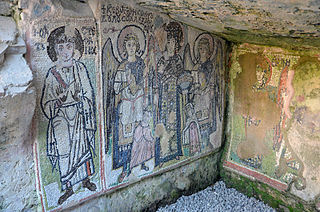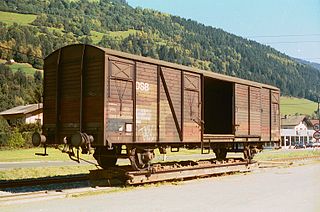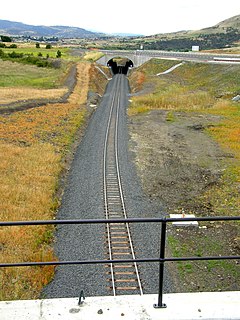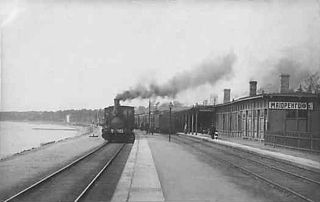- This article is part of the history of rail transport by country series

The history of rail transport in Albania may have begun as early as 1890. Until the end of World War II, Albania's railways were all narrow gauge lines, built to serve either minesites or military purposes. In 1947 shortly after the establishment of the People's Republic of Albania, the country acquired its first standard gauge public railway. The Communist government, led by Enver Hoxha, extensively promoted Albania's railway network, in particular by effectively prohibiting the use of private transport.

World War II, also known as the Second World War, was a global war that lasted from 1939 to 1945. The vast majority of the world's countries—including all the great powers—eventually formed two opposing military alliances: the Allies and the Axis. A state of total war emerged, directly involving more than 100 million people from over 30 countries. The major participants threw their entire economic, industrial, and scientific capabilities behind the war effort, blurring the distinction between civilian and military resources. World War II was the deadliest conflict in human history, marked by 70 to 85 million fatalities, most of whom were civilians in the Soviet Union and China. It included massacres, the genocide of the Holocaust, strategic bombing, premeditated death from starvation and disease, and the only use of nuclear weapons in war.

Enver Halil Hoxha was an Albanian communist politician who served as the head of state of Albania from 1944 until his death in 1985, as the First Secretary of the Party of Labour of Albania. He was chairman of the Democratic Front of Albania and commander-in-chief of the armed forces from 1944 until his death. He served as the 22nd Prime Minister of Albania from 1944 to 1954 and at various times served as foreign minister and defence minister as well.
Contents
Since the end of communism, there has been a considerable increase in car ownership and bus usage in Albania. While some of the country's roads remain in poorer condition, there is major redevelopment taking place, such as the opening of a motorway between Tirana and Durrës.

Tirana is the capital and largest city of the Republic of Albania.

Durrës, historically known as Epidamnos and Dyrrachium, is the second most populous city in the Republic of Albania. The city is the capital of the surrounding Durrës County, one of 12 constituent counties of the country. By air, it is 165 kilometres northwest of Sarandë, 31 kilometres west of Tirana, 83 kilometres south of Shkodër and 579 kilometres east of Rome. Located on the Adriatic Sea, it is the country's most ancient and economic and historic center.















